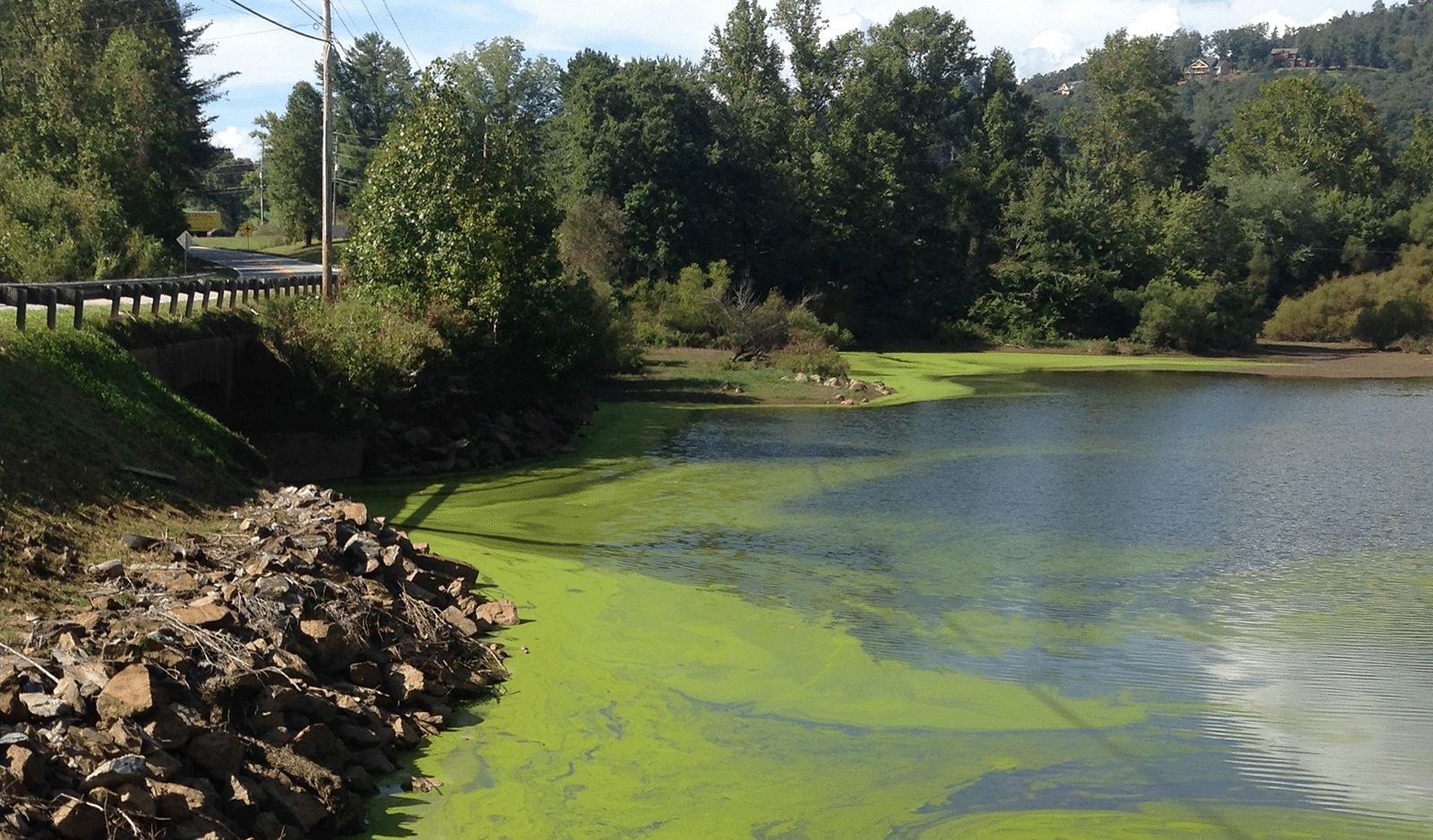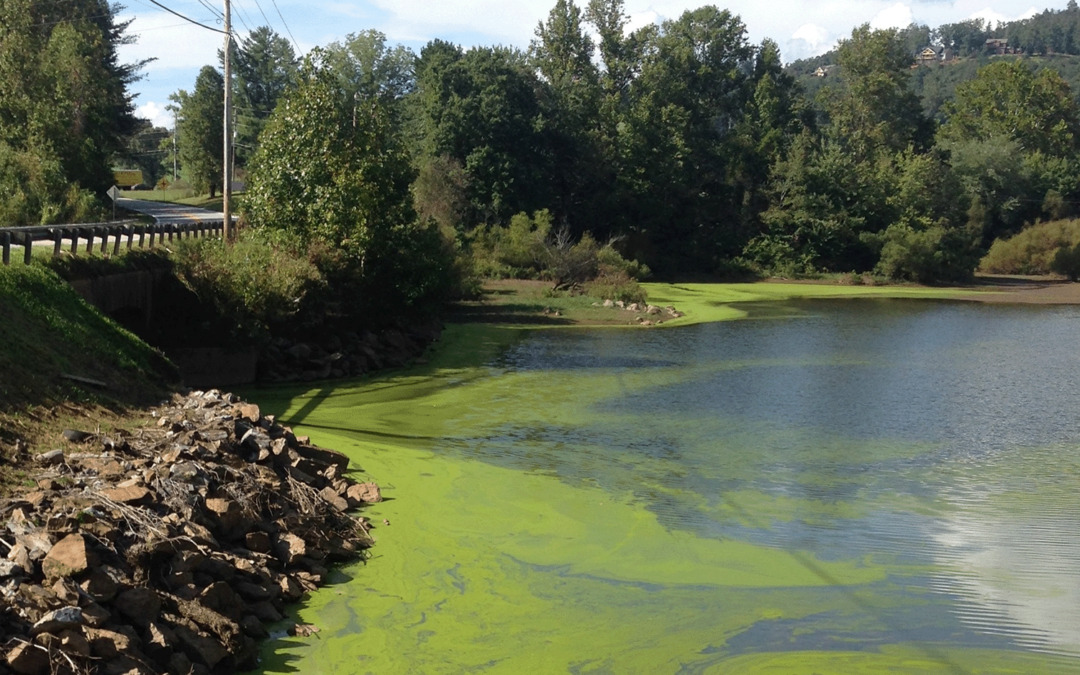What are Algal Growths and How You Can Help Prevent Them

The most powerful nutrients for the growth of plants, including algae, are nitrogen and phosphorus. When nutrient concentrations are low in a lake, algae are relatively sparse. In contrast, high concentrations of nutrients can cause excessive growths of algae and other aquatic plants. An explosion of algal growth can cause the water to look like “pea soup”, form surface scum, or have an unpleasant odor.
Typically, reservoirs in the Southern Blue Ridge Mountains contain very low concentrations of nutrients and are relatively clear with only a small amount of green coloration. Because this natural condition exists, a seemingly small amount of nutrients — particularly phosphorus — can cause a relatively large amount of algae growth or an “algal bloom.”
While nitrogen and phosphorus can come from fertilizers applied to lawns, agricultural fields, athletic complexes, or golf courses, human and animal waste is the largest source of nutrients in our waters. Leaking sewer pipes, faulty wastewater treatment plants or septic systems, livestock operations, and even large concentrations of wildlife, such as Canada geese, contribute to excess nutrient and bacterial problems. (Bird waste is exceptionally high in phosphorus!) Nutrients from these sources are primarily delivered to a waterbody by stormwater runoff, but livestock accessing waters directly is also a problem in some areas.
Erosion and sediment pollution also contribute to higher levels of nutrients in our lakes. Nutrients, bacteria, and pollutants can attach to soil particles and be carried along with stormwater runoff. Soil erosion in the watershed leads to more sediment in streams and lakes and, therefore, higher levels of nutrients. When sediment fills in shallow areas of a lake, these areas become warmer because sunlight penetrates to the lake bottom over a larger area. These shallower, warmer, and nutrient-rich waters are prime conditions for algae growth.
You can help combat algal blooms by ensuring that septic tanks are being properly utilized and maintained, finding ways to minimize water usage and stormwater runoff, and discouraging populations of domesticated Canada geese. Property owners can also evaluate their properties for ways to retain or treat stormwater and plant native trees or shrubs along the streams and the lake. And residents should encourage their local governments to implement water quality protection measures.
- Educate yourself & others about the issues (Hint: You’re doing the first bit now!)
- If you have a septic tank, ensure that it is being properly maintained
- Restore and/or maintain a woody riparian buffer along streams and the lake
- Evaluate your home site for ways to retain or treat stormwater
- Evaluate your practices at home to find ways to minimize water usage and runoff
- Advocate for local water quality protection measures, such as stormwater master planning & ordinances
- Volunteer!
- Donate to MountainTrue!
You can also report algae blooms in our Southern Blue Ridge lakes when you see them. In North Carolina, you can use the NC Division of Water Resources Citizen Report Form to report algae blooms and fish kills.
For Lake Chatuge & Lake Nottely, you can report these incidents to MountainTrue’s Western Regional Office. Please include the following information:
- Date and time the event was first observed
- Waterbody where the event occurred
- County and nearest town
- Location (Coordinates or Street Address, if you have them) and some type of landmark (e.g. bridge, road, community)
- Photos, if you have them

